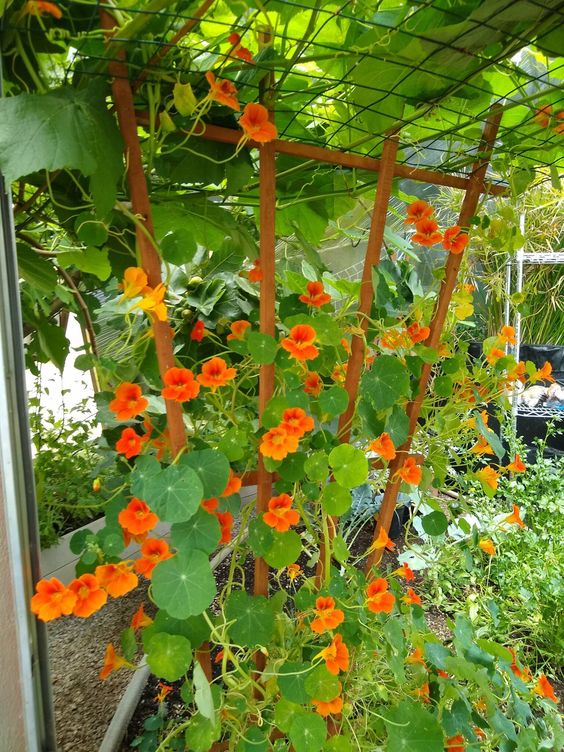Nasturtiums are far more than cheerful flowers, these vibrant plants are packed with benefits that can elevate your garden, health, and kitchen. Native to South and Central America, nasturtiums are known for their striking colors and distinct peppery flavor.
But beyond their beauty and taste, they contain impressive amounts of vitamin C, antioxidants, and other natural plant compounds. They’re often used to support respiratory health, aid in healing minor wounds, and even enhance garden ecosystems by attracting pollinators and repelling pests.
If you’re curious about how this versatile plant can become a staple in your home, read on to discover the incredible benefits and unique ways to use nasturtiums!
Benefits of Nasturtiums
#1. Natural Pest Control
Nasturtiums release a peppery aroma that effectively deters pests like aphids, squash bugs, and whiteflies, making them a natural barrier to protect neighboring plants.
In fact, research shows they work as a “trap crop,” attracting pests to themselves and away from valuable vegetables like tomatoes, cucumbers, and beans.
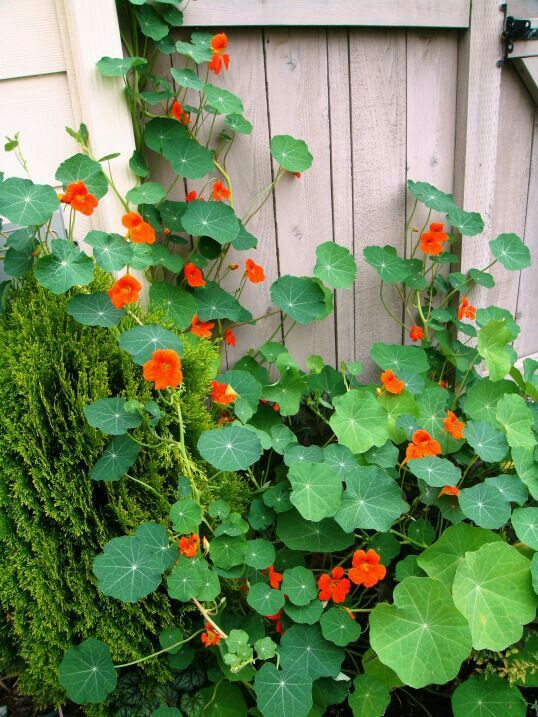
#2. Attracts Pollinators
Nasturtium flowers are a magnet for bees, butterflies, and other pollinators. The bright colors and accessible nectar reservoirs attract pollinators, which increases the overall pollination in your garden.
With healthy pollinator activity, you’ll see a stronger yield in fruits and vegetables.
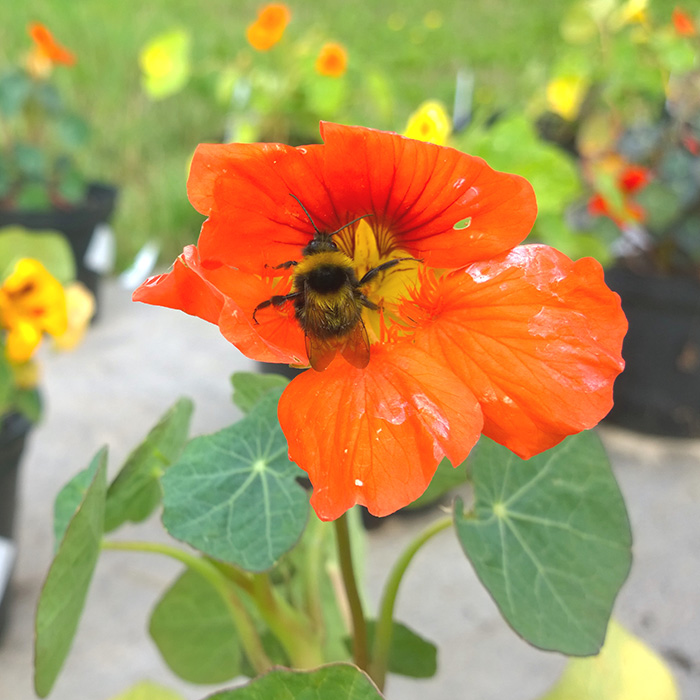
#3. Nutrient Powerhouse
These edible flowers are packed with vitamin C, iron, calcium, and potassium.
A handful of nasturtium leaves provides over 130 mg of vitamin C (more than twice the amount in an orange), supporting immune health, collagen production, and healthy skin.
#4. Supports Respiratory Health
Traditionally used in South American herbal medicine, nasturtiums have natural antibiotic and anti-inflammatory compounds, including glucotropaeolin, which breaks down to release benzyl isothiocyanate, a compound known to help combat respiratory infections.
Nasturtium tea is a popular remedy for colds and coughs.

#5. Antibacterial and Antifungal Properties
Nasturtiums contain natural antimicrobial agents, which can help protect against bacteria and fungi.
Research has shown that benzyl isothiocyanate in nasturtiums acts as an antibacterial, making it effective for treating minor cuts and scrapes to prevent infection.
#6. Anti-inflammatory Benefits
With natural anti-inflammatory compounds, nasturtiums can help soothe inflammation in the body. Consuming nasturtiums or applying them topically has been shown to support joint health and reduce mild skin irritation.

#7. Antioxidant-Rich
Rich in antioxidants like beta-carotene, lutein, and flavonoids, nasturtiums help protect cells from oxidative stress, which contributes to aging and disease.
These antioxidants can support skin health, boost immunity, and may even reduce the risk of chronic illness.
#8. Edible and Delicious
All parts of the nasturtium plant including leaves, flowers, and seeds are edible, adding a peppery kick and vibrant color to dishes. Their taste, similar to watercress, makes them popular for salads, sandwiches, and savory spreads.
#9. Natural Dye Source
The bold colors of nasturtium flowers contain carotenoid pigments, which can be used to create natural dyes in shades of yellow, orange, and red.
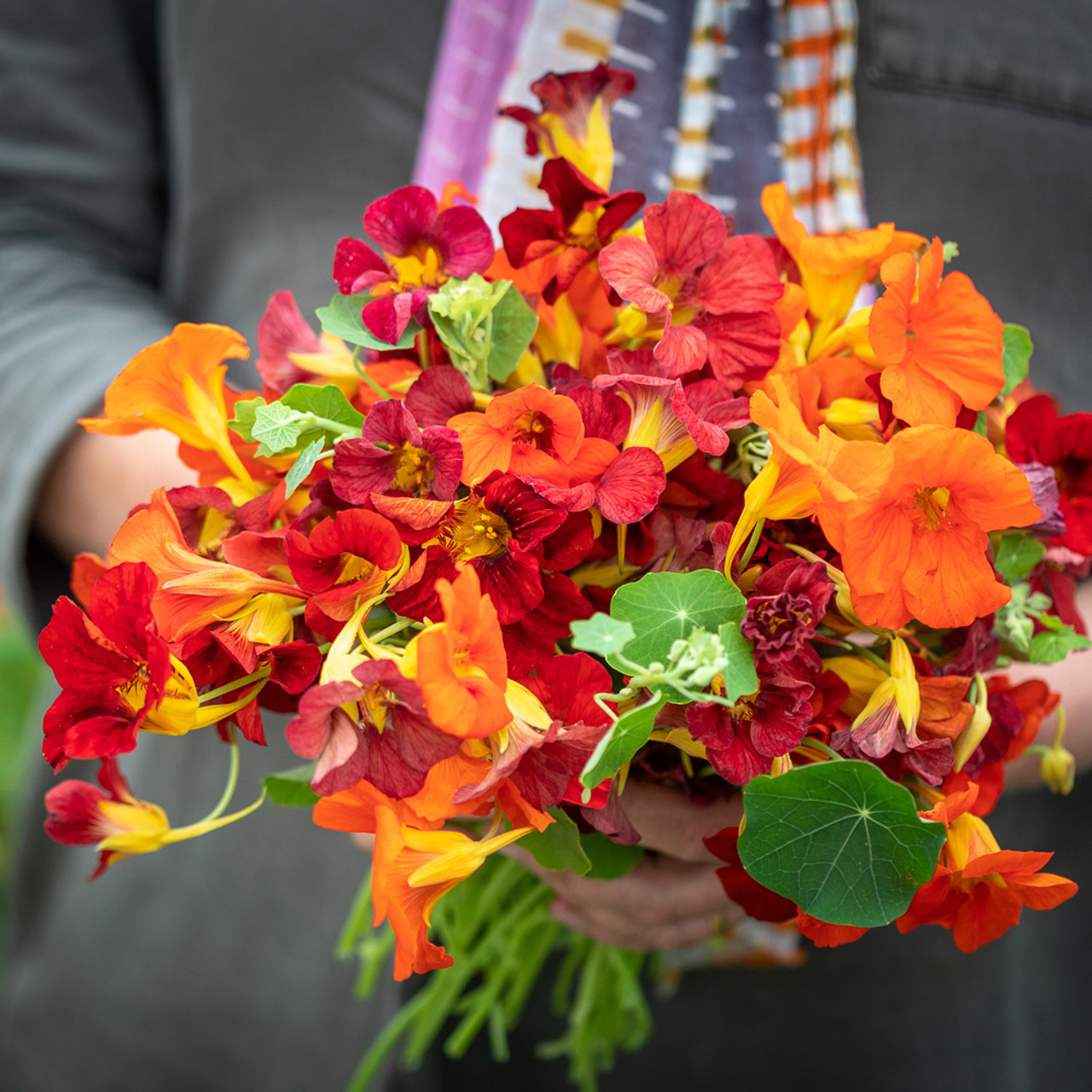
#10. Visual Appeal in the Garden
Nasturtiums add a splash of color and charm with their sprawling green leaves and vibrant flowers. They make a garden look lively, filling empty spaces and even climbing trellises for added visual interest.
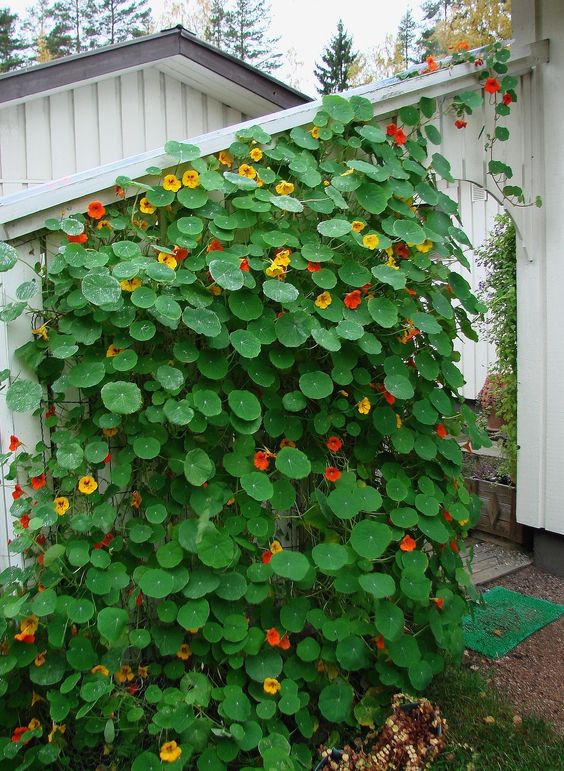
Creative Ways to Use Nasturtiums
#1. Culinary Uses
You can add nasturtium flowers and leaves to salads or use them as sandwich garnishes for a spicy kick. They’re especially popular in fresh summer salads, adding both flavor and visual appeal.
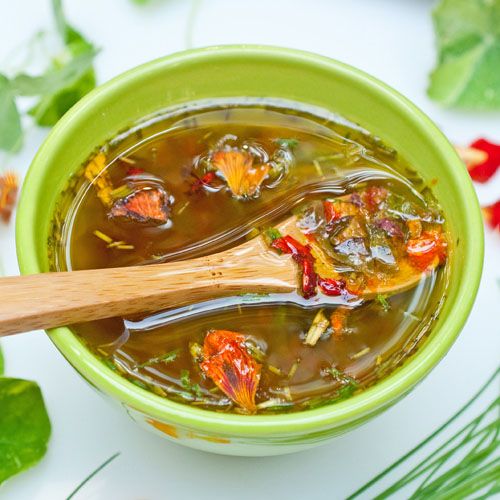
In addition, the green seeds can be pickled to create a tangy, peppery substitute for capers. This is a standout use, as pickled nasturtium seeds offer a unique, flavorful addition to pasta, salads, and fish dishes.
#2. Floral Arrangements and Home Decor
Nasturtiums’ vivid colors and delicate petals make them perfect for floral arrangements. You can use them as accents in mixed bouquets or alone in small vases to add a pop of color indoors.
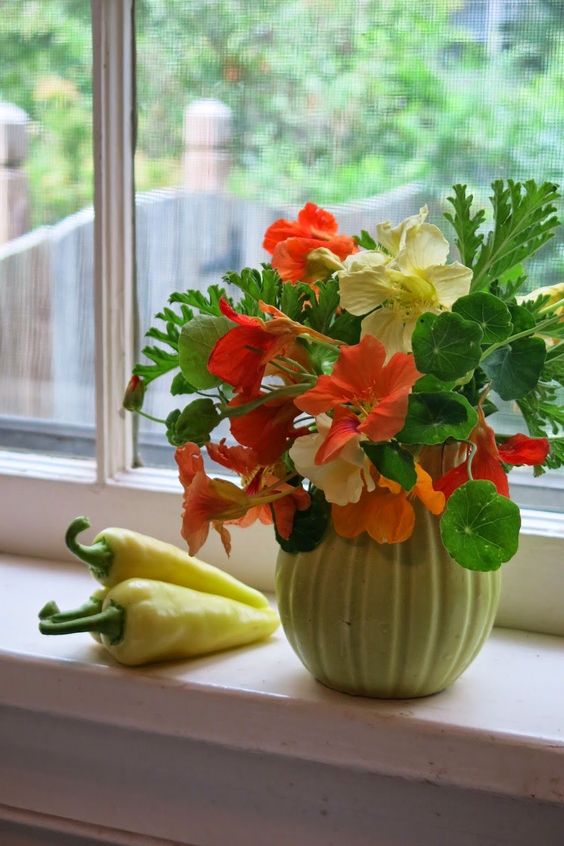
#3. Natural Dyeing
By simmering fresh or dried flowers in water, you can extract earthy yellow and orange shades. This dye can be used on fabrics or papers, creating eco-friendly gift wraps, homemade napkins, or unique art pieces.
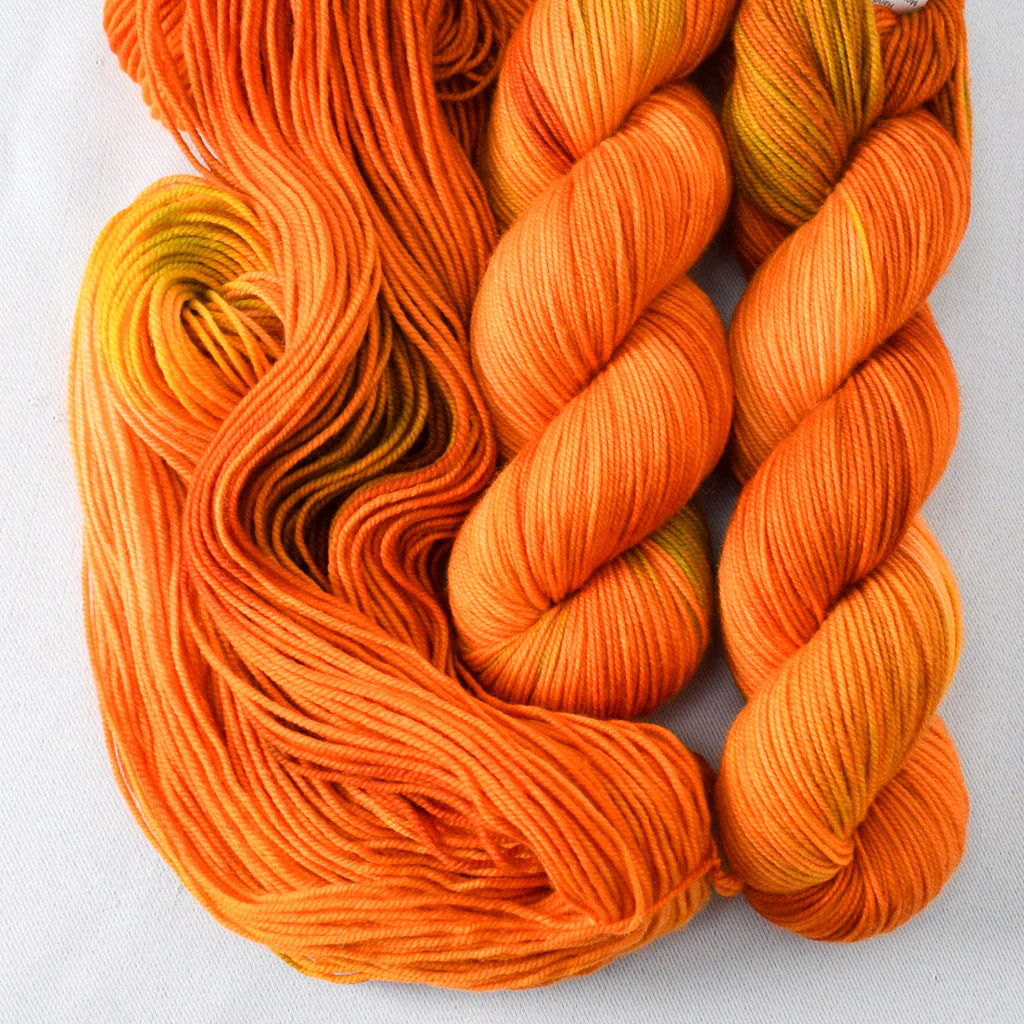
#4. Herbal and Medicinal Applications
To soothe coughs and colds, you can make nasturtium tea, steep a handful of fresh or dried leaves and flowers in hot water for 10 minutes.
Additionally, you can mash fresh nasturtium leaves and apply directly to minor cuts or scrapes. The antibacterial properties help disinfect and encourage healing naturally.
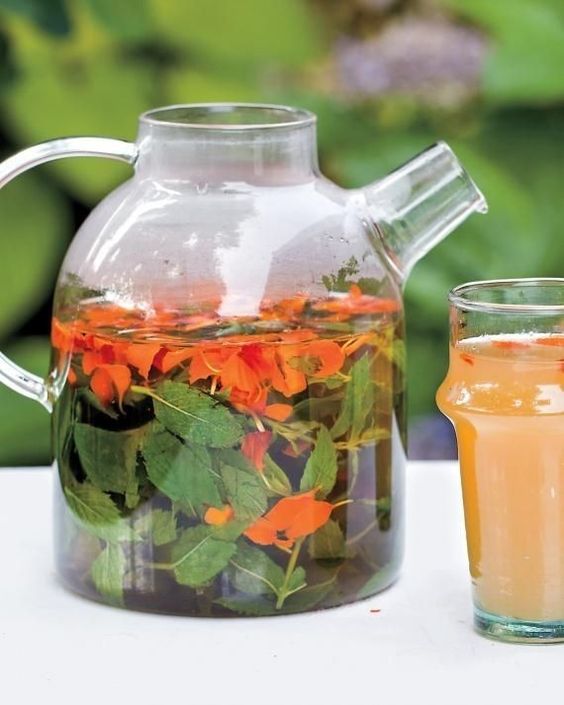
#5. Garden Companion Planting
You should place nasturtiums around vegetable beds or flower borders to repel pests and add color. Their sprawling growth can also serve as ground cover, reducing weed growth while protecting your garden naturally.
